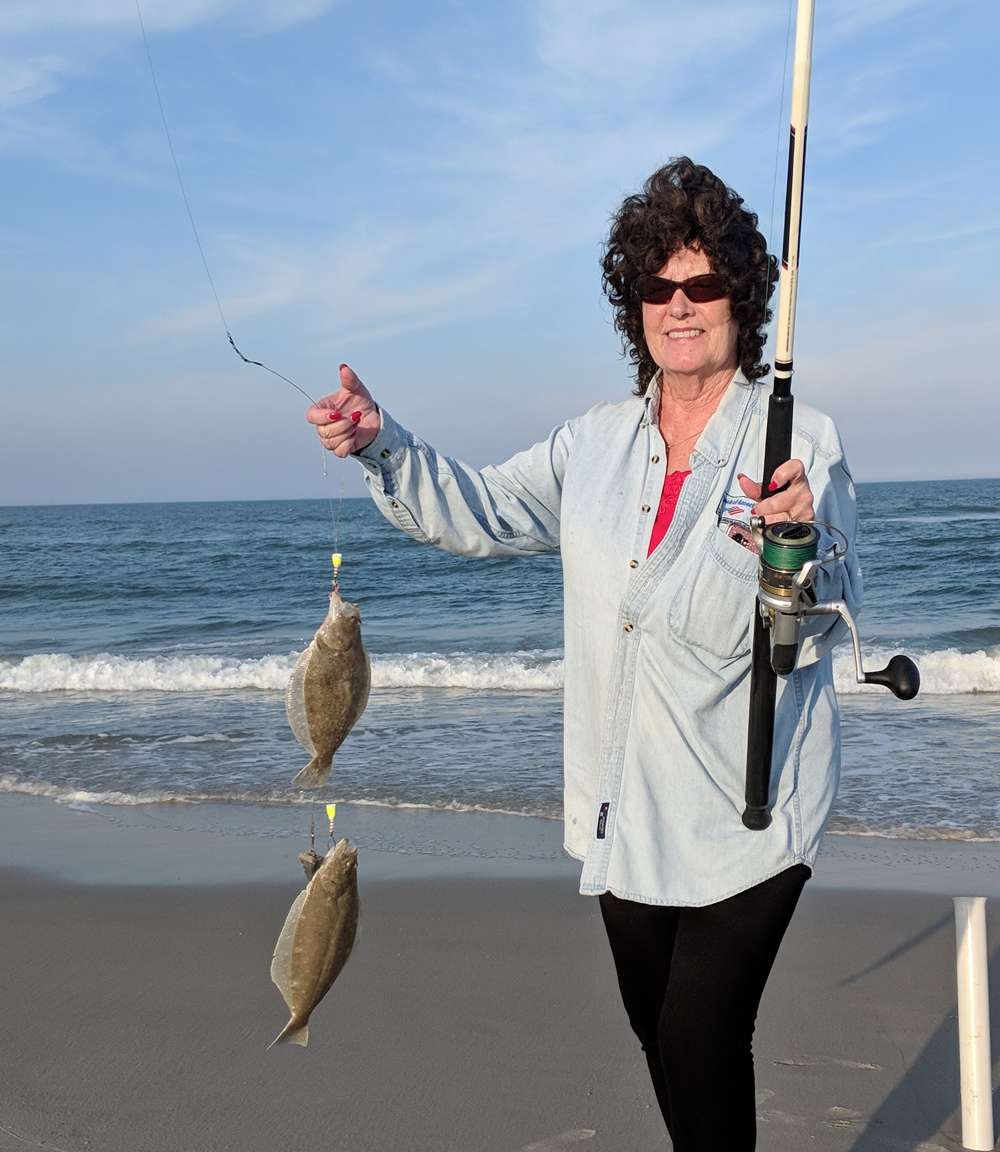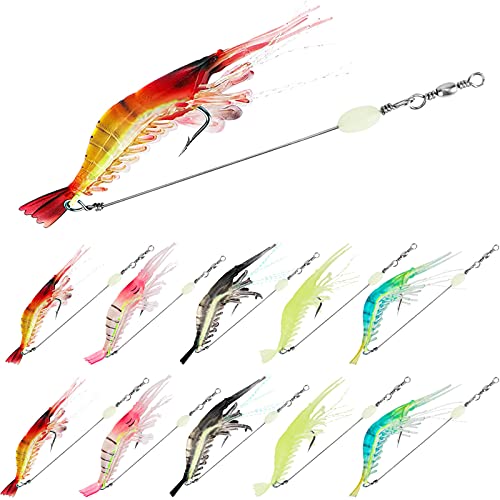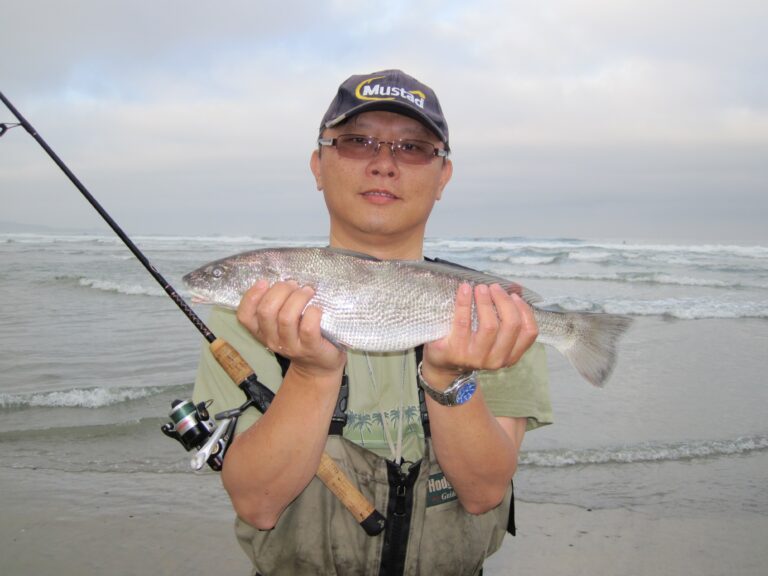The ideal size weight for surf fishing varies depending on several factors, including the current, waves, and target species. When selecting a weight for surf fishing, it is crucial to consider the strength of the surf and the depth of the water.
Additionally, the weight should match the bait or lure being used to ensure proper presentation and casting distance. As a general guideline, weights ranging from 2 to 6 ounces are commonly used in surf fishing. However, it is important to adjust the weight according to the specific conditions of the fishing spot to optimize your chances of success.
Remember to experiment and adjust your weight selection based on the feedback you receive from the bites you get.

Credit: fishtalkmag.com
Selecting The Right Weight For Surf Fishing
When it comes to surf fishing, selecting the right weight is crucial for a successful fishing experience. The weight determines how far you can cast your line and helps you reach the target fish species. In this section, we will explore the key factors to consider when choosing the appropriate weight for surf fishing.
Factors To Consider When Choosing Weight:
Water conditions:
- The water conditions play a significant role in determining the weight you should use for surf fishing. Consider the following points:
- If the water is calm and the waves are small, you can use a lighter weight.
- On the other hand, if the water is rough with strong currents, opt for a heavier weight to maintain stability and prevent your bait from drifting away.
- It’s essential to analyze the surf conditions before your fishing trip to select the appropriate weight.
Casting distance:
- The weight of your fishing rig influences how far you can cast your line. Here are a few key points to consider:
- Lighter weights are suitable for shorter casting distances, typically within 20-30 yards.
- If you want to cast your line further to reach deeper fishing spots, use heavier weights that can provide the necessary distance.
- Keep in mind that your fishing technique and the type of fishing rod also play a role in casting distance.
Target fish species:
- Different fish species have varying feeding habits and are found in different areas. Consider the following points when selecting the weight for your surf fishing expedition:
- Lighter weights are generally more suitable for targeting smaller fish species that dwell closer to the shore.
- If you’re targeting larger fish that reside further from the shore, opt for heavier weights to ensure your bait reaches the desired depth.
- Research the feeding habits and habitats of your target fish species to choose the ideal weight for surf fishing.
Selecting the right weight for surf fishing requires considering the water conditions, casting distance, and target fish species. By analyzing these factors, you can make an informed decision and increase your chances of success. Experiment with different weights during your fishing ventures to find the most effective setup for your specific needs.
Good luck and happy surf fishing!
Understanding Water Conditions For Surf Fishing
Surf fishing is an exciting and rewarding activity that requires a good understanding of the water conditions. When it comes to surf fishing, the size and weight of your gear play a crucial role in determining your success. In this section, we will delve deeper into the importance of understanding water conditions and how they can affect your fishing experience.
The Importance Of Understanding Water Conditions:
Current Strength And Direction:
- The strength and direction of the current have a significant impact on the behavior of fish. By understanding these factors, you can position yourself in the best spot to maximize your catch.
- Fishing with the current can help you cover a larger area and increase your chances of encountering fish. On the other hand, fishing against the current can be more challenging but can yield better results for certain fish species.
- It’s important to consider the tide and how it influences the strength and direction of the current. Fishing during an incoming or outgoing tide might produce different results, so plan your fishing trip accordingly.
Wave And Tide Patterns:
- Waves and tides play a crucial role in surf fishing. Understanding these patterns can help you identify the best time and location to fish.
- Fish are more active during certain tidal conditions, such as high tides or when the tide is changing. This is when they move closer to the shore to feed, presenting you with a better opportunity for a catch.
- Waves can also affect the behavior of fish. Some species may be more active and aggressive in rougher surf conditions, while others might prefer calmer waters. Take note of the wave patterns and adjust your fishing technique accordingly.
Depth And Structure:
- The depth and structure of the water have a direct impact on the types of fish you can catch. Different fish species prefer different depths and structures.
- By understanding the water depth, you can determine the appropriate weight and size of your gear. Deeper waters may require heavier weights to keep your bait in place, while shallower waters may require lighter weights to allow for more natural presentations.
- It’s also essential to consider the structure of the ocean floor, such as sandbars, drop-offs, and rock formations. These structures act as natural fish attractors and can be prime fishing spots.
Understanding water conditions for surf fishing is vital for a successful and enjoyable experience. By considering factors like current strength and direction, wave and tide patterns, as well as the depth and structure of the water, you can increase your chances of landing that trophy catch.
So, the next time you head out for a surf fishing adventure, remember to pay close attention to these key elements and fish like a pro!
Tips For Optimal Success In Surf Fishing
Surf fishing is an exciting and rewarding way to catch fish from the shoreline. To have the best chance of success, it’s important to consider various factors, such as the size weight you should use, proper casting technique, using the right bait and rigging, timing and location, safety precautions, and proper fish handling and conservation.
In this section, we will provide you with some valuable tips for optimal success in surf fishing.
Proper Casting Technique:
- To cast a successful line, try utilizing the following techniques:
- Casting against the wind: When faced with windy conditions, cast in the opposite direction of the wind to ensure your bait reaches the desired location with accuracy.
- Using the right amount of force: Finding the correct balance of force when casting is crucial. Too little force may result in a shortened distance, while too much can cause your line to snap or tangle.
- Avoiding tangles and backlashes: Maintain control of your line throughout the cast to prevent tangles and backlashes. Proper spool tension and thumb control are essential in achieving a smooth and tangle-free cast.
Using The Right Bait And Rigging:
- Increase your chances of a successful catch by considering the following bait and rigging tips:
- Matching the bait to the target fish: Different fish species have varying preferences when it comes to bait. Research the specific species you are targeting and use bait that will best attract their attention.
- Choosing the appropriate rig for the conditions: The right rig can make a significant difference in your fishing success. Factors such as current, water depth, and target species should all be considered when selecting the appropriate rig.
- Using bait clips and bait enhancers: Bait clips can help secure your bait, preventing it from getting washed away by strong currents. Additionally, using bait enhancers like scents and attractants can increase the appeal of your bait to fish.
Timing And Location:
- Increase your chances of a successful catch by considering the following timing and location tips:
- Fishing during high tide: Fishing during high tide allows fish to move closer to shore, providing better opportunities for surf fishing. Check local tide charts to plan your fishing trips accordingly.
- Identifying productive fishing spots: Look for areas where waves break, creating sandbars or troughs that attract fish. Additionally, keep an eye out for structures such as jetties or rock formations that can serve as fish-holding areas.
- Taking advantage of feeding times: Fish are more active during feeding times, such as dawn and dusk. Plan your fishing trips around these optimal periods for increased success.
Safety Precautions:
- Prioritize safety while surf fishing by following these essential precautions:
- Being aware of weather conditions: Check the weather forecast before heading out to ensure safe fishing conditions. Avoid fishing during severe weather, as it can be dangerous.
- Wearing appropriate protective gear: Protect yourself from the sun’s harmful rays by wearing sunscreen, a hat, and sunglasses. Additionally, use appropriate footwear to navigate potentially slippery and uneven surfaces.
- Watching out for rip currents: Rip currents can be powerful and pose a risk to surf anglers. Familiarize yourself with the signs of rip currents and know how to safely escape if caught in one.
Proper Fish Handling And Conservation:
- Practice responsible fishing and ensure the well-being of fish species by following these guidelines:
- Using a landing net for catch and release: Minimize harm to the fish you catch by using a landing net to carefully lift it from the water. This reduces the risk of injury to the fish and increases its chances of survival when released.
- Handling fish with wet hands or gloves: When handling fish, make sure your hands are wet or wear gloves. This helps to protect the fish’s delicate slime layer, which is important for its health and survival.
- Following local fishing regulations and size limits: Familiarize yourself with the fishing regulations of your location, including any size limits or protected species. Adhering to these regulations ensures the sustainability of fish populations for future generations.
By following these tips, you’ll be well on your way to optimizing your surf fishing success. Remember to practice patience and persistence, as surf fishing can require time and effort. Enjoy the experience and the thrill of reeling in your catch while respecting the environment and the fish you encounter.
Happy fishing!
Conclusion
Finding the right size weight for surf fishing is crucial for a successful angling experience. The weight of your rig plays a vital role in casting distance, bait presentation, and overall effectiveness. To determine the ideal weight, factors such as current, wind, and water depth need to be considered.
By understanding the conditions of the surf and the target species, you can select the appropriate weight to achieve optimal results. Experimenting with different weights allows you to adapt to changing conditions and maximize your chances of hooking a fish.
Remember that there is no one-size-fits-all approach, as different situations call for varying weights. Stay attuned to the movement and behavior of the surf, keep an eye on successful fishermen in your area, and be open to adapting your equipment accordingly.
Ultimately, with careful consideration and a bit of trial and error, you’ll find the perfect weight for your surf fishing adventures.






